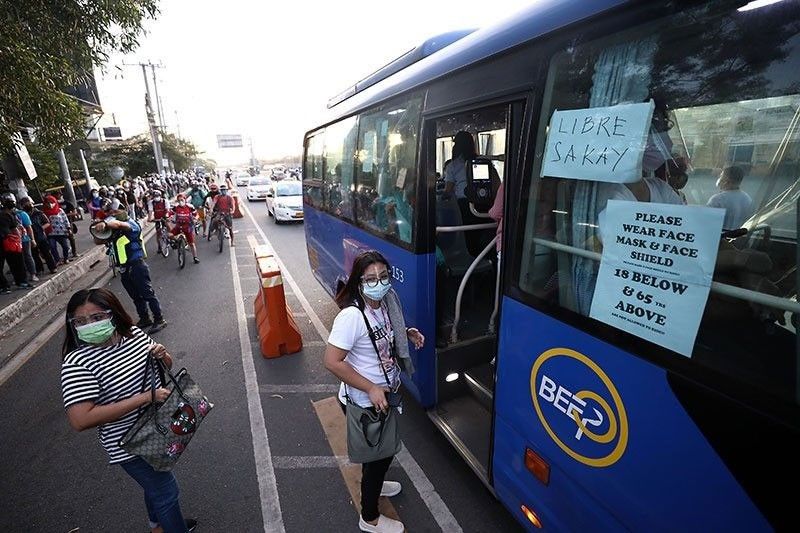Cost Effective Transit Advertising Philippines for Brand Understanding
Cost Effective Transit Advertising Philippines for Brand Understanding
Blog Article
Recognizing the Role of Transit Marketing in Enhancing Brand Visibility and Customer Engagement
Transit advertising and marketing has actually become an essential aspect in the advertising landscape, using special chances for brands to elevate their presence and involve customers properly. With the ability to reach a diverse and captive audience throughout their day-to-day commutes, these marketing approaches are not simply concerning presence; they have to do with creating significant links with possible clients. As we explore the multifaceted benefits and cutting-edge methods within transportation marketing, it ends up being important to take into consideration how these elements collectively affect customer assumption and habits, questioning regarding their lasting influence on brand loyalty.
Meaning of Transit Marketing
Transportation advertising refers to the method of promoting products, solutions, or brands through ads put in and around public transport systems. This form of advertising and marketing includes a range of positionings, consisting of posters on buses and trains, digital screens at transportation stations, and covers on the exterior of cars. It aims to get to a diverse audience, profiting from the high foot website traffic connected with public transportation.
Transit advertising is strategically positioned to capture the focus of commuters, who often spend considerable time traveling or waiting. By integrating ads into the daily routines of individuals, brands can create an enduring perception and foster brand name recognition. The medium is especially reliable in city atmospheres, where public transport is a primary mode of traveling.
Additionally, transportation marketing can facilitate local targeting, allowing services to reach details demographics based on transit paths and terminal locations. As metropolitan populaces expand and making use of public transportation boosts, this marketing technique has gained importance as a crucial element of integrated advertising techniques. The dynamic nature of transit advertising, integrated with its ability to involve consumers in a captive setting, highlights its significance in modern advertising practices.
Benefits of Transportation Marketing
The efficiency of transit advertising and marketing hinges on its capability to provide a wide range of benefits to brand names seeking to boost exposure and involvement. One of the primary advantages is the extensive reach it provides; transportation advertisements can efficiently target diverse demographics throughout city areas, getting to both pedestrians and travelers alike. This broad exposure substantially boosts brand understanding.
An additional benefit is the high frequency of impressions. As transit vehicles take a trip along recognized paths and stop at several places, they develop repetitive direct exposure that reinforces brand messages. This frequency promotes knowledge, which is crucial in consumer decision-making.
Transit advertising is also economical contrasted to various other media platforms. Given its extensive reach and possibility for high perceptions, brand names frequently experience a lower expense per thousand impressions (CPM), maximizing their advertising budget.
Moreover, transportation advertisements can produce a feeling of neighborhood connection. By aligning with regional transit systems, brands can reverberate with local audiences and promote a sense of neighborhood pride. This local method enhances brand name loyalty and engagement, making transit marketing a compelling selection for organizations intending to solidify their existence on the market.

Effective Strategies for Transportation Projects
To make best use of the effect of transit campaigns, brands need to leverage tactical preparation and implementation tailored to their target market. First, recognizing the market qualities of the audience utilizing public transit is crucial. This enables brand names to develop individualized messaging that reverberates with prospective customers.
Next, picking the right transit tools is important. Whether making use of bus wraps, metro posters, or electronic screens, each tool has distinct benefits that can boost presence. For instance, dynamic visuals on bus wraps can stand out, while electronic ads can be upgraded often to show timely promos.
Furthermore, integrating a natural branding strategy across transportation platforms makes sure uniformity and reinforces the brand name's identity. Making use of captivating styles and unforgettable taglines will certainly strengthen brand recall amongst travelers.
Finally, timing is an essential factor in implementing effective transit projects. Introducing projects during optimal traveling hours or local events can dramatically boost presence and engagement. By utilizing these strategies, brands can effectively harness the capacity of transportation marketing, cultivating better awareness and link with their target click reference market. Inevitably, a well-executed transportation campaign official site can drive significant development in brand presence and customer interaction.

Gauging Impact and Engagement
In assessing the performance of transportation ad campaign, exact dimension of impact and engagement is crucial for brand names seeking to maximize their marketing strategies. Metrics such as reach, frequency, and perceptions supply fundamental information to analyze visibility. Analyzing these elements helps identify the number of possible customers are exposed to the advertisements during their everyday commutes.
Interaction can be additional evaluated through customer interactions, such as site traffic, social media sites discusses, and direct responses to calls-to-action featured in the ads. Using devices like QR codes or distinct URLs can assist in tracking of consumer actions directly connected to transit projects. Studies and comments mechanisms additionally function as important techniques to collect qualitative information on customer understandings and recall of the advertisement.
Moreover, advanced analytics and acknowledgment designs can correlate transportation direct exposure with subsequent investing in actions, offering insights into the roi. By employing a thorough approach that combines qualitative and measurable actions, brands can create a nuanced understanding of their transportation advertising influence. Eventually, this data-driven strategy makes it possible for brands to refine their campaigns, ensuring they resonate efficiently with target market and improve total brand visibility.
Study of Successful Campaigns
Successful transit ad campaign offer as engaging examples of exactly how efficient methods can elevate brand name presence and engagement. Transit Advertising Philippines. One remarkable situation is the "I Love New york city" project, which transformed the city's image and attracted numerous vacationers. By using subway ads, signboards, and bus covers, the project produced a strong, cohesive brand identification, resulting in a substantial uptick in tourist and regional service patronage
One more exemplary campaign is Coca-Cola's "Share a Coke" campaign, which leveraged transportation advertising and marketing to personalize the brand name experience. By including prominent names on advertising products throughout numerous transportation platforms, Coca-Cola cultivated a deeper psychological link with customers, encouraging them to share their experiences on social networks.
Furthermore, the "Got Milk?" project properly made use of mass transit ads to get to a wide target market, strengthening the message of the importance of milk in a balanced diet plan. The project saw a measurable rise in milk intake in target demographics.
These study illustrate that when implemented thoughtfully, transit advertising can considerably enhance brand presence, foster customer involvement, and drive measurable outcomes, showing its essential role in modern-day advertising strategies. - Transit Advertising Philippines
Verdict
In verdict, transit advertising serves as an essential device for improving brand name presence and promoting consumer involvement. By using strategically positioned promotions within mass transit systems, click this site brand names can properly reach varied target markets and reinforce acknowledgment through regular direct exposure. The implementation of targeted messaging and cutting-edge approaches even more intensifies the impact of transportation projects. Inevitably, the capacity to measure engagement and assess effective study emphasizes the effectiveness of transit advertising and marketing in driving brand commitment and consumer interactions.
Transportation advertising has actually arised as a pivotal element in the advertising landscape, providing unique possibilities for brands to raise their visibility and engage consumers properly.In addition, transit marketing can facilitate localized targeting, permitting services to reach particular demographics based on transportation routes and terminal areas.In examining the effectiveness of transit advertising campaigns, precise dimension of impact and involvement is important for brands looking for to optimize their advertising and marketing approaches.Successful transit marketing campaigns offer as compelling instances of how efficient approaches can boost brand name visibility and engagement.In verdict, transportation marketing offers as an important tool for improving brand name visibility and fostering consumer involvement.
Report this page